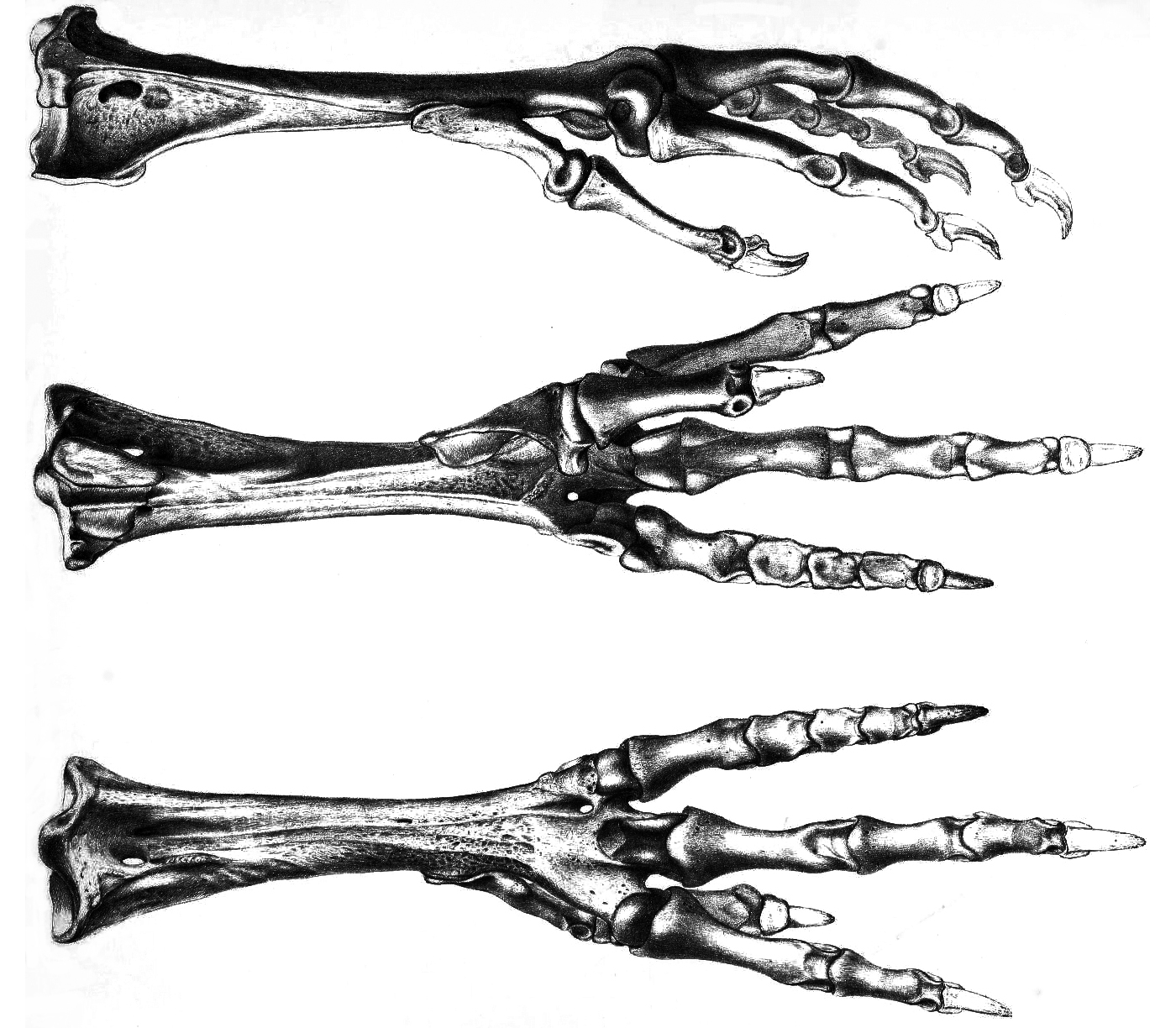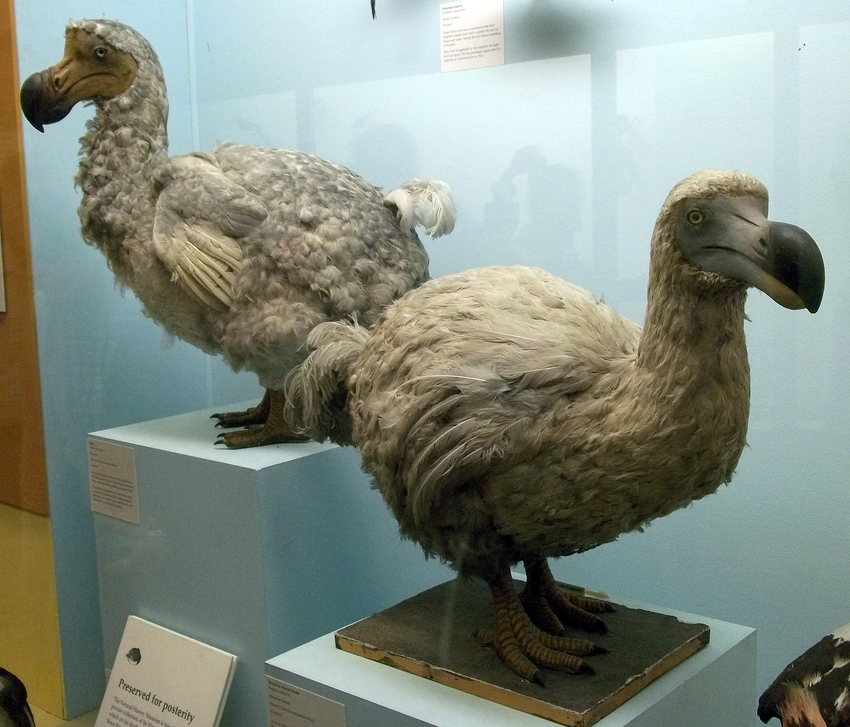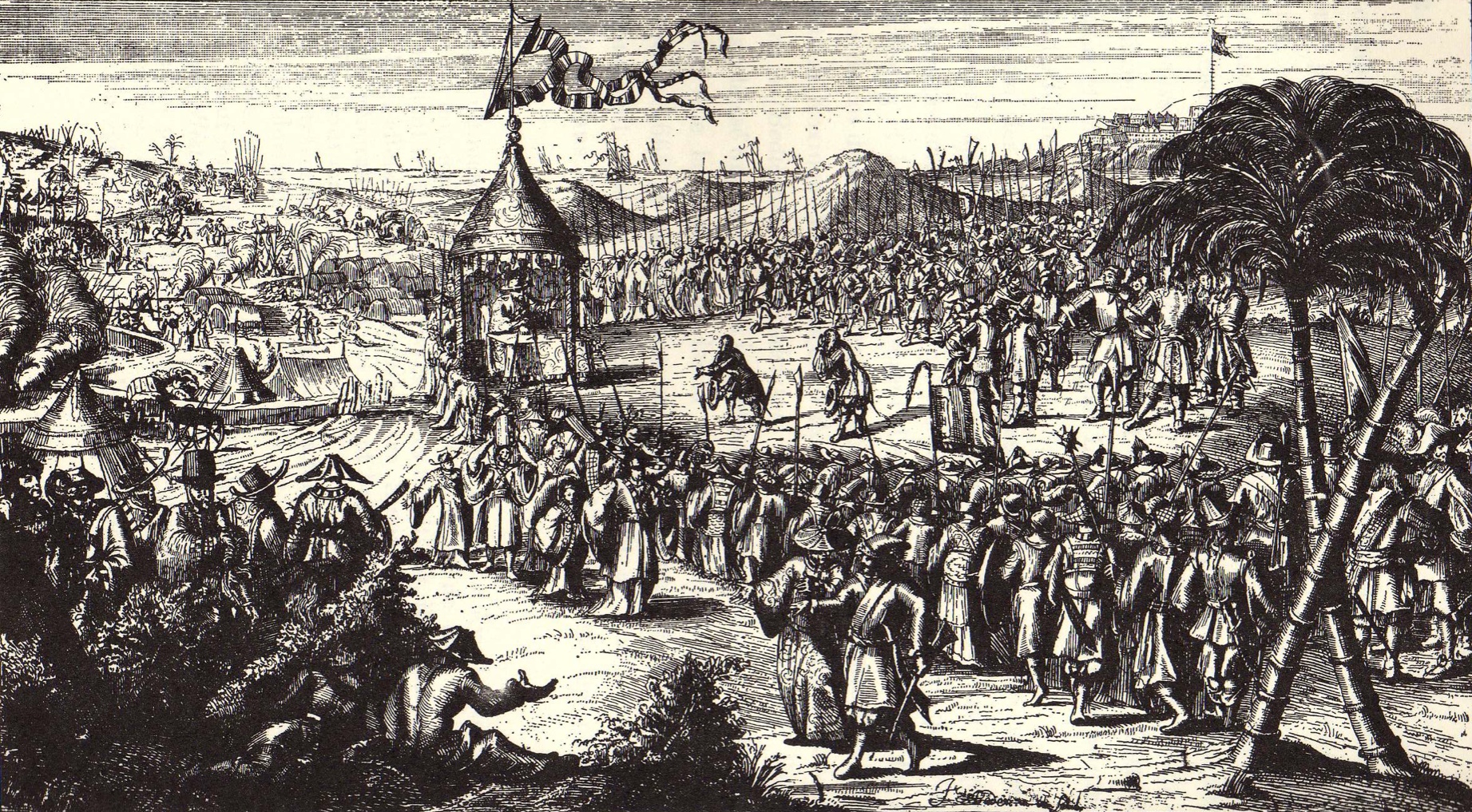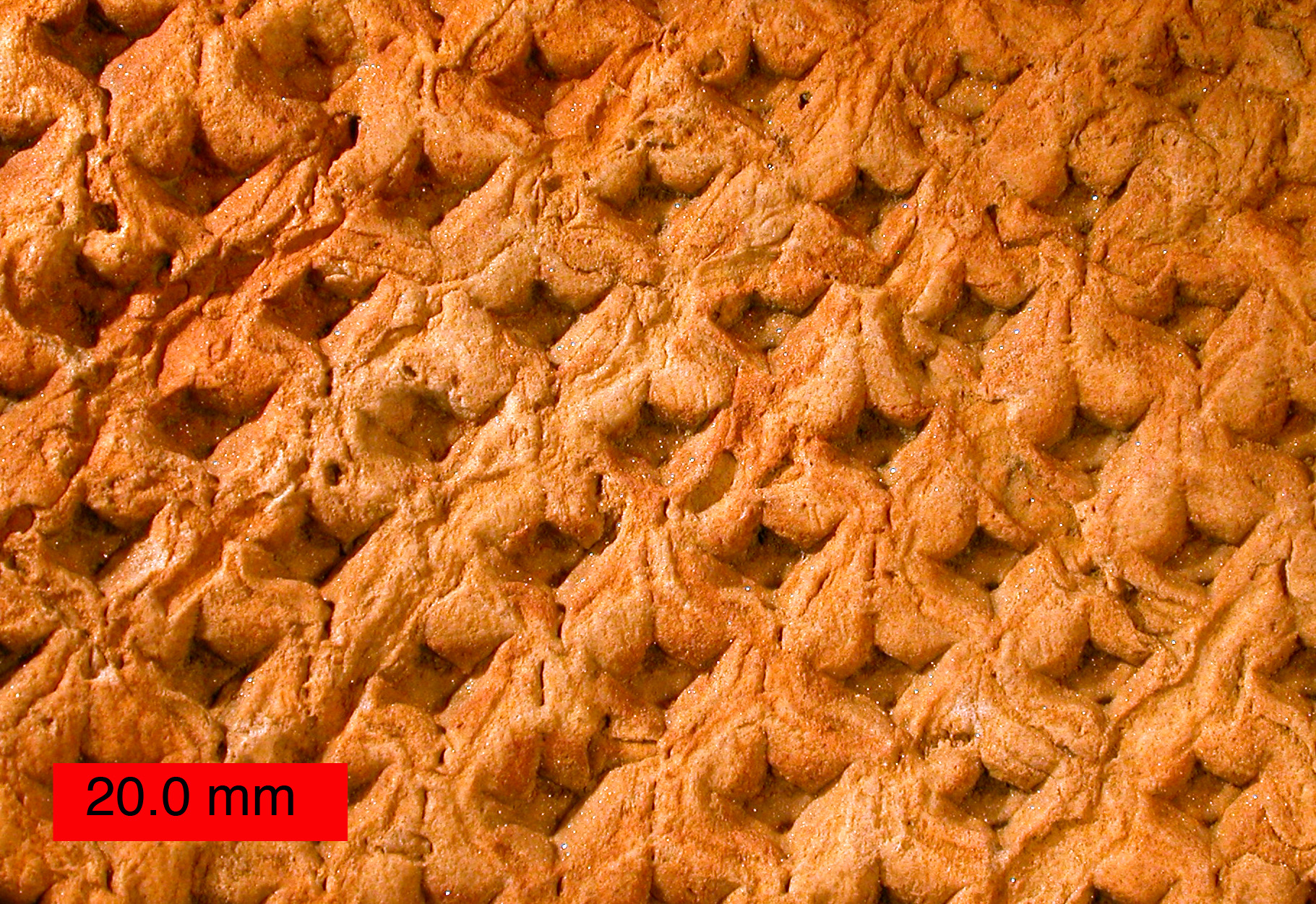|
Dodo
The dodo (''Raphus cucullatus'') is an extinction, extinct flightless bird that was endemism, endemic to the island of Mauritius, which is east of Madagascar in the Indian Ocean. The dodo's closest relative was the also-extinct and flightless Rodrigues solitaire. The two formed the taxonomic rank, subtribe Raphina, a clade of extinct flightless birds that are a part of the group that includes Columbidae, pigeons and doves (the family Columbidae). The closest extant taxon, living relative of the dodo is the Nicobar pigeon. A white dodo was once thought to have existed on the nearby island of Réunion, but it is now believed that this assumption was merely confusion based on the also-extinct Réunion ibis and paintings of white dodos. Subfossil remains show the dodo measured about in height and may have weighed in the wild. The dodo's appearance in life is evidenced only by drawings, paintings, and written accounts from the 17th century. Since these portraits vary considerabl ... [...More Info...] [...Related Items...] OR: [Wikipedia] [Google] [Baidu] |
Réunion Ibis
The Réunion ibis or Réunion sacred ibis (''Threskiornis solitarius'') is an list of extinct birds, extinct species of ibis that was endemic to the volcanic island of Réunion in the Indian Ocean. The first subfossil remains were found in 1974, and the ibis was first scientifically described in 1987. Its closest relatives are the Malagasy sacred ibis, the African sacred ibis, and the straw-necked ibis. Travellers' accounts from the 17th and 18th centuries described a white bird on Réunion that flew with difficulty and preferred solitude, which was subsequently referred to as the "Réunion solitaire". In the mid 19th century, the old travellers' accounts were incorrectly assumed to refer to white relatives of the dodo, due to one account specifically mentioning dodos on the island, and because 17th-century paintings of white dodos had recently surfaced. However, no fossils referable to dodo-like birds were ever found on Réunion, and it was later questioned whether the painting ... [...More Info...] [...Related Items...] OR: [Wikipedia] [Google] [Baidu] |
Raphina
The Raphina are a clade of extinct flightless birds formerly called didines or didine birds. They inhabited the Mascarene Islands of Mauritius and Rodrigues, but became extinct through hunting by humans and predation by introduced non-native mammals following human colonisation in the 17th century. Historically, many different groups have been named for both the dodo and the Rodrigues solitaire, not all grouping them together. Most recently, it is considered that the two birds can be classified in Columbidae, often under the subfamily Raphinae. The first person to suggest a close affinity to the doves was Johannes Theodor Reinhardt, whose opinions were then supported by Hugh Edwin Strickland and Alexander Gordon Melville. Recent extractions of DNA from the dodo and Rodrigues solitaire, as well as 37 species of doves, has found where in Columbidae the raphines should be placed. Raphines are not the most primitive columbid, instead they are grouped with the Nicobar pigeon as ... [...More Info...] [...Related Items...] OR: [Wikipedia] [Google] [Baidu] |
Rodrigues Solitaire
The Rodrigues solitaire (''Pezophaps solitaria'') is an extinct flightless bird that was endemism, endemic to the island of Rodrigues, east of Madagascar in the Indian Ocean. Genetically within the family of Columbidae, pigeons and doves, it was most closely related to the also extinct dodo of the nearby island Mauritius#Mauritius Island, Mauritius, the two forming the subfamily Raphinae. The Nicobar pigeon is their closest living genetic relative. Rodrigues solitaires grew to the size of swans, and demonstrated pronounced sexual dimorphism. Males were much larger than females and measured up to in height and in weight, contrasting with and for females. Its plumage was grey and brown; the female was paler than the male. It had a black band at the base of its slightly hooked beak, and its neck and legs were long. Both sexes were highly Territory (animal), territorial, with large bony knobs on their wings that were used in combat. The Rodrigues solitaire laid a single egg that ... [...More Info...] [...Related Items...] OR: [Wikipedia] [Google] [Baidu] |
Mare Aux Songes
The Mare aux Songes (English: "pond of taro"; ) swamp is a lagerstätte located close to the sea in south eastern Mauritius. Many subfossils of recently extinct animals have accumulated in the swamp, which was once a lake, and some of the first subfossil remains of dodos were found there. History In 1865, a British railway engineer working in south-east Mauritius noticed bones that had been disturbed by workers digging peat. He showed his findings to the government schoolmaster at Mahébourg, George Clark, who subsequently uncovered an abundance of subfossil dodo bones in the swamp. Clark had been searching for thirty years, having been inspired by Strickland & Melville's monograph about the bird. In 1866, Clark explained his procedure to The Ibis, an ornithology journal: Remains of over 300 dodos were found in the swamp, but only very few skull and wing bones among them, which may be explained by the upper bodies having been washed away or scavenged while the lower body was tra ... [...More Info...] [...Related Items...] OR: [Wikipedia] [Google] [Baidu] |
Columbidae
Columbidae is a bird Family (biology), family consisting of doves and pigeons. It is the only family in the Order (biology), order Columbiformes. These are stout-bodied birds with small heads, relatively short necks and slender bills that in some species feature fleshy ceres. They Herbivore, feed largely on plant matter, feeding on seeds (granivore, granivory), fruit (frugivore, frugivory), and foliage (folivore, folivory). In colloquial English, the smaller species tend to be called "doves", and the larger ones "pigeons", although the distinction is not consistent, and there is no scientific separation between them. Historically, the common names for these birds involve a great deal of variation. The bird most commonly referred to as "pigeon" is the domestic pigeon, descendant of the wild rock dove, which is a common Urban wildlife, inhabitant of cities as the feral pigeon. Columbidae contains 51 genera divided into 353 species. The family occurs worldwide, often in close p ... [...More Info...] [...Related Items...] OR: [Wikipedia] [Google] [Baidu] |
Alice's Adventures In Wonderland
''Alice's Adventures in Wonderland'' (also known as ''Alice in Wonderland'') is an 1865 English Children's literature, children's novel by Lewis Carroll, a mathematics university don, don at the University of Oxford. It details the story of a girl named Alice (Alice's Adventures in Wonderland), Alice who falls through a rabbit hole into a fantasy world of anthropomorphism, anthropomorphic creatures. It is seen as an example of the literary nonsense genre. The artist John Tenniel provided 42 wood-engraved illustrations for the book. It received positive reviews upon release and is now one of the best-known works of Victorian literature; its narrative, structure, characters and imagery have had a widespread influence on popular culture and literature, especially in the fantasy genre. It is credited as helping end an era of didacticism in children's literature, inaugurating an era in which writing for children aimed to "delight or entertain". The tale plays with logic, giving th ... [...More Info...] [...Related Items...] OR: [Wikipedia] [Google] [Baidu] |
Mauritius
Mauritius, officially the Republic of Mauritius, is an island country in the Indian Ocean, about off the southeastern coast of East Africa, east of Madagascar. It includes the main island (also called Mauritius), as well as Rodrigues, Agaléga, and St. Brandon (Cargados Carajos shoals). The islands of Mauritius and Rodrigues, along with nearby Réunion (a French overseas department), are part of the Mascarene Islands. The main island of Mauritius, where the population is concentrated, hosts the capital and largest city, Port Louis. The country spans and has an exclusive economic zone covering approximately . The 1502 Portuguese Cantino planisphere has led some historians to speculate that Arab sailors were the first to discover the uninhabited island around 975, naming it ''Dina Arobi''. Called ''Ilha do Cirne'' or ''Ilha do Cerne'' on early Portuguese maps, the island was visited by Portuguese sailors in 1507. A Dutch fleet, under the command of Admiral Van War ... [...More Info...] [...Related Items...] OR: [Wikipedia] [Google] [Baidu] |
Nicobar Pigeon
The Nicobar pigeon or Nicobar dove (''Caloenas nicobarica'', Car: ') is a bird found on small islands and in coastal regions from the Andaman and Nicobar Islands, India, east through the Indonesian Archipelago, to the Solomons and Palau. It is the only living member of the genus '' Caloenas'' alongside the extinct spotted green pigeon and Kanaka pigeon, and is the closest living relative of the extinct dodo and Rodrigues solitaire. Taxonomy In 1738, the English naturalist Eleazar Albin included a description and two illustrations of the Nicobar pigeon in his ''A Natural History of Birds''. When in 1758 the Swedish naturalist Carl Linnaeus updated his ''Systema Naturae'' for the tenth edition, he placed the Nicobar pigeon with all the other pigeons in the genus ''Columba''. Linnaeus included a brief description, coined the binomial name ''Columba nicobarica'' and cited Albin's work. The species is now placed in the genus '' Caloenas'' erected by English zoologist George Rober ... [...More Info...] [...Related Items...] OR: [Wikipedia] [Google] [Baidu] |
Flightless Bird
Flightless birds are birds that cannot Bird flight, fly, as they have, through evolution, lost the ability to. There are over 60 extant species, including the well-known ratites (ostriches, emus, cassowary, cassowaries, Rhea (bird), rheas, and Kiwi (bird), kiwis) and penguins. The smallest flightless bird is the Inaccessible Island rail (length 12.5 cm, weight 34.7 g). The largest (both heaviest and tallest) flightless bird, which is also the largest living bird in general, is the common ostrich (2.7 m, 156 kg). Many domesticated birds, such as the domestic chicken and domestic duck, have lost the ability to fly for extended periods, although their ancestral species, the red junglefowl and mallard, respectively, are capable of extended flight. A few particularly bred birds, such as the Broad Breasted White turkey, have become totally flightless as a result of selective breeding; the birds were bred to grow massive breast meat that weighs too much for the bird's wings ... [...More Info...] [...Related Items...] OR: [Wikipedia] [Google] [Baidu] |
1662
Events January–March * January 4 – Dziaddin Mukarram Shah becomes the new Sultan of Kedah, an independent kingdom on the Malay Peninsula, upon the death of his father, Sultan Muhyiddin Mansur. * January 10 – At the age of 19, Louis Grimaldi becomes the new Prince of Monaco upon the death of his grandfather, Honoré II. * January 14 – A Portuguese garrison invades Morocco and kidnaps 35 women and girls, then steals 400 head of cattle. The Moroccans counterattack and kill the garrison's commander, 12 knights and 38 other Portuguese soldiers before the surviving Portuguese are given sanctuary inside the English fortress at Tangier. A brief war ensues between England and Morocco. * January 22 – Former Chinese Emperor Yongli, who had surrendered to General Wu Sangui in December, is put on a boat along with his sons and grandsons at Sagaing in Burma (at the time, Burma), leaving under the promise that they will be given safe passage elsewher ... [...More Info...] [...Related Items...] OR: [Wikipedia] [Google] [Baidu] |
Oxford University Museum Of Natural History
The Oxford University Museum of Natural History (OUMNH) is a museum displaying many of the University of Oxford's natural history specimens, located on Parks Road in Oxford, England. It also contains a lecture theatre which is used by the university's chemistry, zoology and The Mathematical Institute, University of Oxford, mathematics departments. The museum provides the only public access into the adjoining Pitt Rivers Museum. History The university's Honour School of Natural Science started in 1850, but the facilities for teaching were scattered around the city of Oxford in the various Colleges of Oxford University, colleges. The university's collection of anatomy, anatomical and natural history specimens were similarly spread around the city. Regius Professor of Medicine, Sir Henry Acland, initiated the construction of the museum between 1855 and 1860, to bring together all the aspects of science around a central display area. The building was officially opened in 1860, althou ... [...More Info...] [...Related Items...] OR: [Wikipedia] [Google] [Baidu] |
Extinction
Extinction is the termination of an organism by the death of its Endling, last member. A taxon may become Functional extinction, functionally extinct before the death of its last member if it loses the capacity to Reproduction, reproduce and recover. As a species' potential Range (biology), range may be very large, determining this moment is difficult, and is usually done retrospectively. This difficulty leads to phenomena such as Lazarus taxon, Lazarus taxa, where a species presumed extinct abruptly "reappears" (typically in the Fossil, fossil record) after a period of apparent absence. Over five billion species are estimated to have died out. It is estimated that there are currently around 8.7 million species of eukaryotes globally, possibly many times more if microorganisms are included. Notable extinct animal species include Dinosaur, non-avian dinosaurs, Machairodontinae, saber-toothed cats, and mammoths. Through evolution, species arise through the process of specia ... [...More Info...] [...Related Items...] OR: [Wikipedia] [Google] [Baidu] |









